Leader: Roy Mitchell
On a lightly overcast, mild morning which became warm and sunny, I was joined by nine members for a walk from Upper Swainswick exploring part of this lovely valley near Bath. 18th century maps show the valley has remained largely unchanged for several centuries, with its patchwork of different-sized grass fields remaining from then. The five very small hamlets, scattered throughout the valley, usually on opposite sides about a third of the way up the sloping sides, have also not grown appreciably over the centuries.
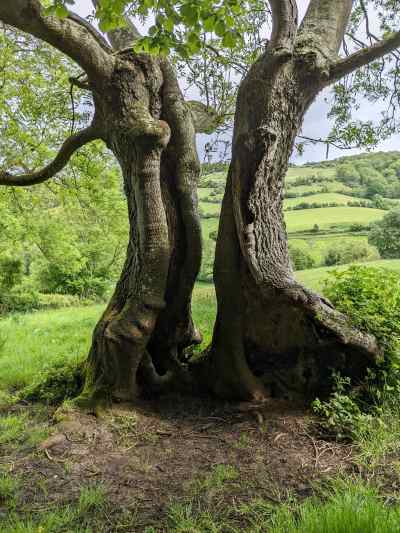
Lam Brook Valley © Roy Mitchell
The valley presents an open view showing the patchwork of pasture fields enclosed by thick and sometimes overgrown hedgerow. There are also a few small bits of woodland. The fields are not intensively farmed and only relatively lightly grazed by small numbers of sheep and cows. Many are not grazed or cut until later in the year. We hoped to see a good selection of wildflowers, birds and insects by exploring on footpaths the fields, hedgerows and brook between and around two of the hamlets on opposite sides of the valley.
The first field just below our meeting point was rough pasture and had little of interest in terms of flora until we reached the bottom near the Lam brook. On our way down hill we were overflown by Swallows, House Martins and some Swifts which we encountered again and again throughout the walk.
A swallow was spotted going in and out of an open-fronted large structure, obviously taking food back to little ones in a nest. A Robin was collecting a beak-full of grubs. Other birds seen or heard included Raven, Wren, Chiffchaff, Dunnock, House Sparrow, Great Tit, and Blue Tit. A Buzzard was also spotted high above the valley and our last bird of the morning was a patrolling Kestrel, stopping to hover now and then for a longer, more intense look below!
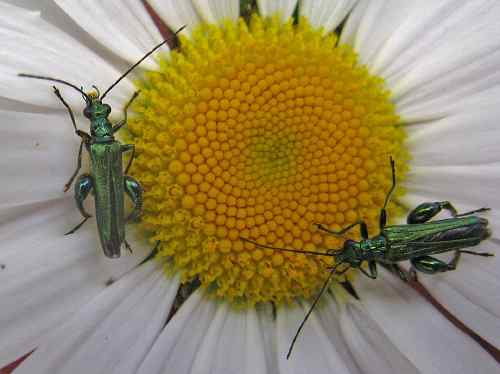
Oedemera nobilis © Rob Randall
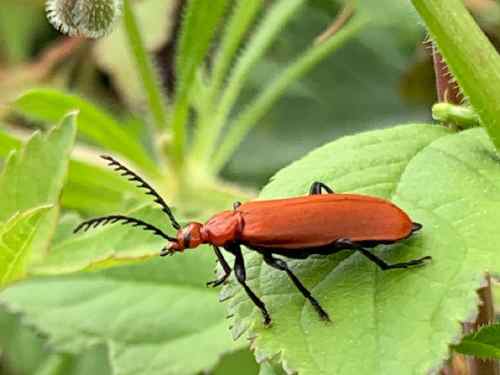
Cardinal Beetle © Karen Funnell
We were not disappointed in insect interest either. Our first encounter, a Rustic Sailor Beetle (Cantharis rustica) was in that first field on our way down to the Brook. It was closely followed by a Thick-thighed Flower Beetle (Oedemera nobilis) in tall vegetation by the brook and then an Alder Leaf-beetle (Agelastica alni) on alders by the brook. The Alder leaf -beetle was spotted again in other parts of the hedgerow throughout our walk. Other insects included Fleshflies (Sarcophaga carnaria), Common Cardinal Beetle (Pyrochroa serraticornis) and a Green Dock beetle (Gastrophysa virdula).
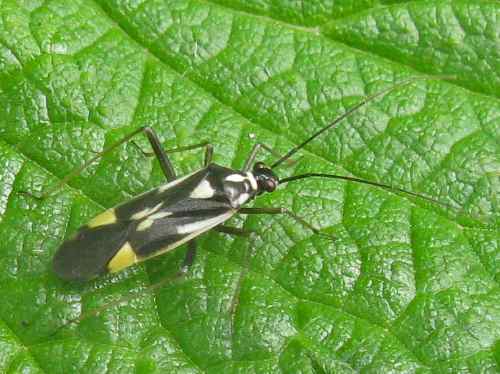
Grypocoris stysi ©Rob Randall
Butterflies were a little scarce but we encountered several Speckled Wood, a large white and a flash of a possible blue which was too fleeting to positively identify! Moths included a Common Nettle-Tap (Anthophila fabriciana), Moth-fly, aka Owl Midge (Pericoma fuliginosa), Cock’s-foot Moth (Glyphipterix simpliciella) and a Silver-Ground Carpet Moth (Xanthorhoe Montanata). A plant bug Grypocoris stysi was also spotted.
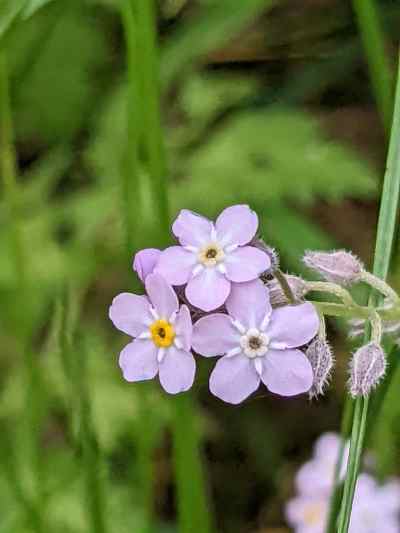
Pink Field Forget-me-not © Roy Mitchell
Most of the wild flowering plants, which were varied and plentiful in parts, was typical of mature pastureland and hedgerows. One or two more unusual plants were spotted. The first was a nice example of a Field Forget-me-not (Myosotis arvensis) pink-flowered plant. Rob Randall explained that the pink colouration occurred because the plant did not produce the same levels of colour pigmentation as the more usual blue. A second interesting find for this location was a Yellow Archangel (Lamium galeobdolon), more usually found at woodland edges but, as here, can be found at the foot of partially shaded damp hedgerow. White Dead Nettle (Lamium Album) were plentiful along the hedgerow amongst the dominant Cow Parsley (Anthriscus sylvestris) which filled the roadside hedgerow verges.
Other Flora in the hedgerow and grazed pastureland included Tormentil (Potentilla erecta), Bugle (Ajuga reptans), CuckooFlower (Cardamine pratensis), Red Campion (Silene dioica), Germander Speedwell (Veronica chamaedrys) Birds-foot-trefoil (Lotus corniculatus), Bush Vetch (Vicia sepium), Red clover (trifolium pratense), White Briony (Bryonia cretica) and Herb Robert (Geranium robertianum).
A few edible plants were also pointed out by Rob. Common Sorrel (Rumex acetosa), Pignut (Conopodium majus) and, surprisingly (if cooked), the large umbrels of flower heads produced by the Hogweed (Heracleum sphondylium). There were also plenty of nettles which of course are also edible and often used as a herbal remedy. Let us not forget the humble blackberry-producing Bramble (Rubus fruticosus) which was in flower (white or pink) and seen in parts of the hedgerow.
Time caught up with us and we could do no more than look over a field gate at an uncut meadow, which was full of Meadow buttercup (Ranunculas acris) and quite possibly very many more wildflowers waiting to be found among the long grass! The charity Bathscape, with which the Bath Natural History Society has links, considers the Swainswick valley is important and interesting geologically and for biodiversity. It has suggested that it is worth further study, as it believes the valley could support even greater biodiversity than currently.
A little further up the valley from this walk a farm has established a wild flower seed business, managing and improving their pastureland to increase biodiversity and producing wild flower seeds for sale. They also run a few ‘day courses’ a year explaining their work and methods.
As always on Bath Natural History Society field trips it was the company and the free sharing of expertise and knowledge which makes it such an interesting and enjoyable experience. My thanks to all on the walk for their contributions and sharing, much of which is reflected in this field report.
Roy Mitchell

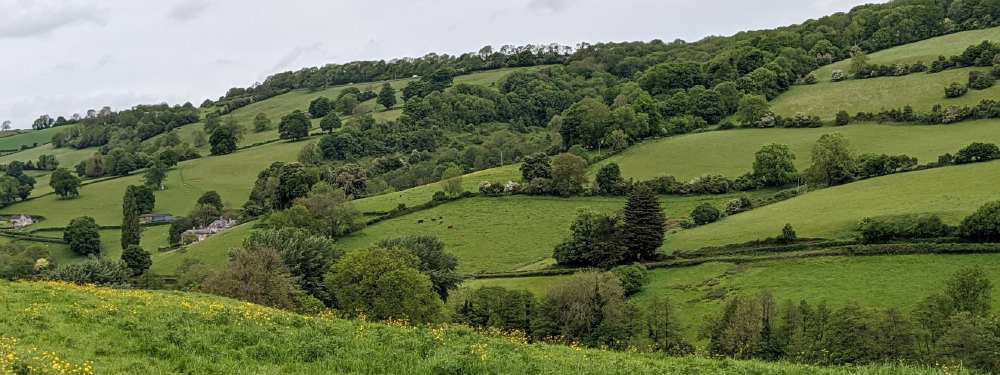
Recent Comments